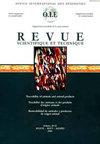Progress towards rabies control and elimination in Vietnam.
IF 1.9
4区 农林科学
Q2 VETERINARY SCIENCES
Revue Scientifique et Technique-Office International Des Epizooties
Pub Date : 2019-05-01
DOI:10.20506/rst.38.1.2953
引用次数: 16
Abstract
Rabies is a fatal viral disease that causes an estimated 59,000 human deaths each year. The majority of these deaths occur in developing countries in Asia. Canine rabies is endemic to Vietnam, which is, however, moving towards the disease's elimination. Many countries, such as Vietnam, have invested tremendous resources in controlling rabies, highlighting the goal of regional and global elimination of this neglected disease. In Vietnam, rabies is recognised as one of five high-priority, zoonotic diseases by the Ministry of Health and the Ministry of Agriculture and Rural Development. Investment by the government and by international partners for rabies prevention and control has played a substantial role in reducing human rabies deaths from 404 cases in 1992 to 74 cases in 2017. The catalyst for this effort was the Prime Minister's creation of the National Rabies Program in 1996, which led to increased support and resources for rabies prevention and control. Interventions carried out since then include the expansion of post-exposure prophylaxis centres throughout the country, the introduction or revision of key legislation and guidelines, and improved multisectoral One Health collaboration. In addition, support from international partners, such as the World Organisation for Animal Health (OIE), the World Health Organization (WHO), the Food and Agriculture Organization of the United Nations (FAO), and the Centers for Disease Control and Prevention (CDC), has helped to increase awareness, manage dog populations more effectively, and improve Vietnam's surveillance and diagnostic capabilities. To pursue the goal of eliminating dog-mediated rabies in Vietnam, political commitment is crucial. Resources must be made available to enforce the regulations and guidelines that will enable Vietnam to achieve greater canine rabies vaccination coverage. In this paper, the authors provide an overview of the animal and human health systems in Vietnam, as well as past, current and future directions of rabies prevention and control.越南在控制和消除狂犬病方面取得的进展。
狂犬病是一种致命的病毒性疾病,每年导致约5.9万人死亡。这些死亡大多发生在亚洲的发展中国家。犬狂犬病是越南的地方性疾病,然而,越南正朝着消灭这种疾病的方向迈进。越南等许多国家在控制狂犬病方面投入了大量资源,突出了区域和全球消除这一被忽视疾病的目标。在越南,狂犬病被卫生部和农业与农村发展部认定为五种高度优先的人畜共患疾病之一。政府和国际伙伴在狂犬病预防和控制方面的投资在将人类狂犬病死亡人数从1992年的404例减少到2017年的74例方面发挥了重要作用。这一努力的催化剂是总理于1996年创建的国家狂犬病规划,该规划增加了对狂犬病预防和控制的支持和资源。自那时以来开展的干预措施包括在全国各地扩大接触后预防中心,采用或修订关键立法和准则,以及改进多部门“同一个健康”合作。此外,世界动物卫生组织(OIE)、世界卫生组织(WHO)、联合国粮食及农业组织(FAO)和疾病控制和预防中心等国际伙伴的支持有助于提高认识,更有效地管理犬类种群,并提高越南的监测和诊断能力。为了在越南实现消除犬媒狂犬病的目标,政治承诺至关重要。必须提供资源来执行法规和指导方针,使越南能够实现更大的犬狂犬病疫苗接种覆盖率。在本文中,作者概述了越南的动物和人类卫生系统,以及过去、现在和未来狂犬病预防和控制的方向。
本文章由计算机程序翻译,如有差异,请以英文原文为准。
求助全文
约1分钟内获得全文
求助全文
来源期刊
CiteScore
2.40
自引率
0.00%
发文量
22
审稿时长
>24 weeks
期刊介绍:
The Scientific and Technical Review is a periodical publication containing scientific information that is updated constantly. The Review plays a significant role in fulfilling some of the priority functions of the OIE. This peer-reviewed journal contains in-depth studies devoted to current scientific and technical developments in animal health and veterinary public health worldwide, food safety and animal welfare. The Review benefits from the advice of an Advisory Editorial Board and a Scientific and Technical Committee composed of top scientists from across the globe.

 求助内容:
求助内容: 应助结果提醒方式:
应助结果提醒方式:


